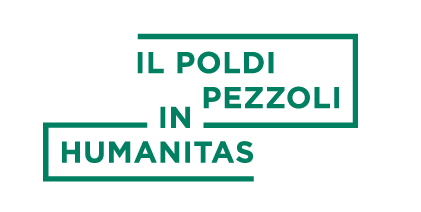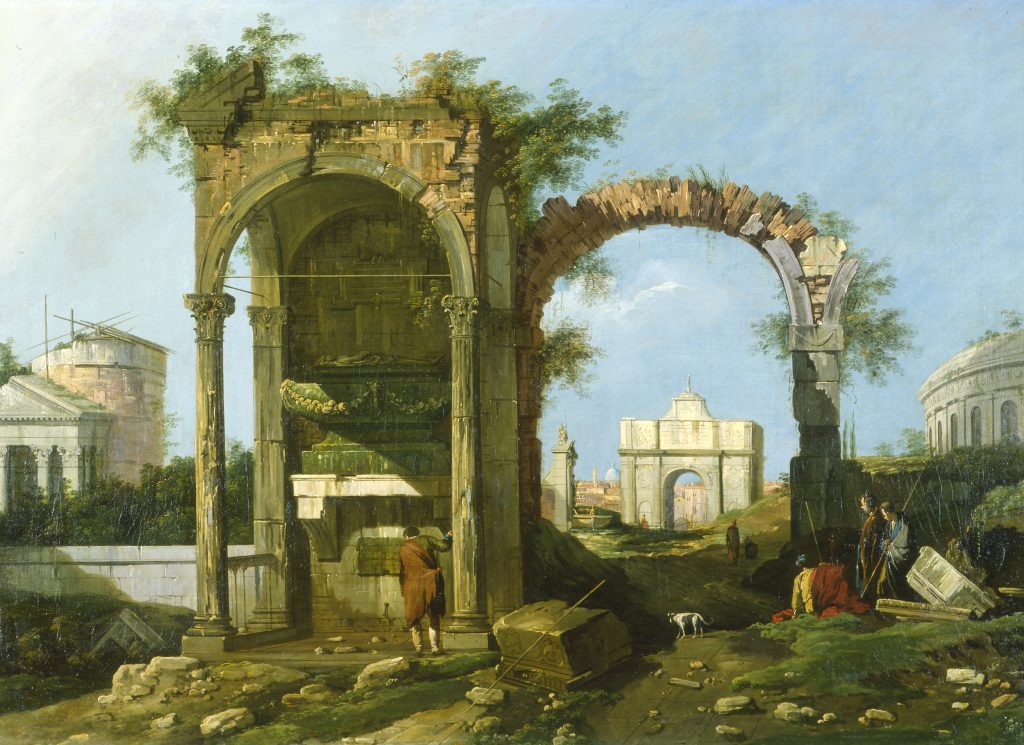
Giovanni Antonio Canal, known as Canaletto
(Venice 1697–1768)
Capriccio with Ruins and Classical Buildings
1756 circa
Oil on canvas
91×108,6 cm
Museo Poldi Pezzoli, Milan

ARTWORK
An architectural capriccio is a work that freely combines architectures from different eras, real or fantastical, and ancient ruins.
Almost in the middle of the composition of this capriccio, under a loggia with round arches, is a Renaissance funeral monument overlooking a plaque and a figure attempting to decipher its text. On the left is a circular tower behind a classical portico, while on the opposite side of the canvas is a circular building of unspecified age. Through the ruined arch we can see a triumphal arch, reminiscent of the Porta San Giovanni in Padua, a fountain and the glimpse of a city with a bell tower and dome similar to that of Saint Peter’s Basilica in Rome.
A static group of shepherds almost look like part of the scenery, while a dog seems to be wandering through the ruins.
This is one of Canaletto’s most popular ideal vedute (view paintings), of which several replicas and copies are known to have been made. The piece can be dated to the artist’s latter years of activity, likely after his return from England in 1756.
BIOGRAPHY
Giovanni Antonio Canal, known as Canaletto, was born in Venice in 1697. His father was a painter of theatre sets, and the two of them worked together on a number of projects in Rome’s theatres.
Returning to Venice in 1720, he began painting views or vedute. They were extremely precise and detailed, and brought him significant recognition. We know that the artist made preparatory drawings using a tool known as the camera obscura. He later found painting picture as souvenirs for tourists to be very profitable. In these works, his painting was less precise, featuring theatrical illumination and an almost Impressionist interest in the play of light and shadow. These paintings usually depict sumptuous Venetian public ceremonies (e.g. A Regatta on the Grand Canal) along with partial views of the city. In addition to his vedute, he also produced several capricci: imagined landscapes often featuring classical ruins.
Canaletto was highly regarded by foreign collectors and visited England several times between 1746 and 1756. He died in Venice on 19 April 1768.
